
AC Aero USA LLC
How about a new engine company to start this year’s buyer’s guide? That’s exactly what we got when longtime freelance engine designer Andrew Higgs joined with businessman-and-Reno-racer Karl Grove to form AC Aero. The new company offers two distinct lines of engines or engine parts. And as expected from these performance-minded folks, all of their engines are new, noncertified designs aimed at maximum performance and efficiency.
AC Aero’s most accessible, not to say inexpensive, offerings center on four- and six-cylinder Lycoming architecture engines. They include the Legion stroker kits (409 cubic inches for four-cylinders, 613 cubes for six-cylinders), plus the four-pot Gladiator liquid-cooled cylinder package and the Centurion six-cylinder liquid-cooled option. Note: These are completely new cylinder bank designs configured to run on standard Lycoming bottom ends. In other words, they turn a Lycoming into a liquid-cooled engine.
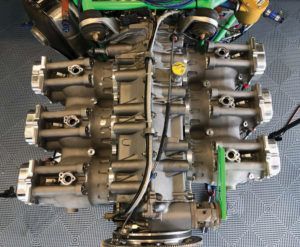
Furthermore, the liquid-cooled cylinders are also oversized compared to stock Lycoming fare and can be combined with the Legion stroker kits to answer the “ain’t no replacement for displacement” call. These combinations have provoked the most early interest, notes AC Aero. And with 440 and 660 cubic inches for the four- and six-cylinder engines, respectively, we can see why. They’re known as the Gladiator X440 and the Centurion X660 and should provide some real he-man sport for those with the coin.
Advantages to the new liquid-cooled cylinder banks are an advanced combustion chamber, tighter piston and piston ring tolerances for more power and less oil consumption, elimination of shock cooling, along with less weight compared to air cooling (yes, including the coolant, radiator and so on). We’ll also note the AX50 air-cooled cylinders Higgs was previously known for have been discontinued.
To maintain quality, AC Aero uses a service center approach to sales and service. The first of these is Aircraft Service and Parts (ASAP) Corporation in Bakersfield, California. Customers can fly in to ASAP for turnkey installations. The best advice is to communicate with AC Aero or ASAP directly as an amazing number of combinations and possibilities are on offer, from starting with rebuildable Lycoming cores to all-new engines. AC Aero says its first batch of hardware went online in October 2020, with finished engines available as fast as they can be assembled after that. Look for one racing past a pylon near you soon.
BRP Rotax
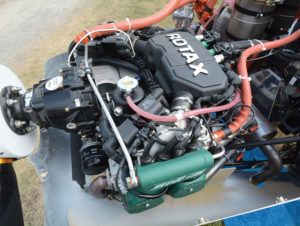
Rotax has been the largest volume engine maker in general aviation for quite a while and by a large margin. A division of BRP, Rotax is based in central Austria, where it builds engines for the greater BRP empire, including all sorts of light recreational vehicles such as side-by-side utilities, boats, personal watercraft, snowmobiles, motorcycles and light aircraft. Therefore, Rotax is a larger engine maker than it might seem at first, with first-rate production facilities and engineering.
In the United States, Rotax is mainly represented by Lockwood Aviation Supply in Sebring, Florida, and California Power Systems in Corona, California.
For 2021, Rotax has not raised its prices so far, and their 912, 914 and 915 series engines continue mechanically unchanged. These relatively lightweight and compact engines use air-cooled cylinders and liquid-cooled cylinder heads and are designed for higher rpm. Therefore they all include a built-in spur gear propeller speed reduction unit (gearbox) to optimize propeller rpm. All are dry sump and employ hydraulic valve lifters; carburetor or electronic fuel injection is offered depending on the model; some are turbocharged.
Still the best-selling Rotax is the carbureted 912 series, available in 80-hp form as the 912 UL or with 100 hp as the 912 ULS. The 80 hp is most popular in Europe; the 100-hp variant remains the number one seller in the United States. It’s worth noting, however, that Rotax engines do best on unleaded mogas because the lead in 100LL eventually accumulates as sludge in the gearbox.
Rotax offers two turbocharged engines: the carbureted 914 and the 915 iS, the manufacturer’s newest powerplant. The latter is definitely spendy at over $38,000. But it offers the best power-to-weight ratio in its class, along with a meaty 141 takeoff and 135 continuous horsepower up to 15,000 feet for excellent mid-altitude performance. By comparison, the 115-hp 914 will save you about $7000 by retaining carburetion in lieu of fuel injection. Plus, the 914 has a time between overhaul (TBO) of 2000 hours compared to the 915’s 1200 hours. Even better horsepower-per-dollar is found with the 100 hp 912 ULS at just under $19,000, which greatly explains its popularity.
While not an overwhelmingly widespread option, Rotaxes have been around long enough that used and rebuilt examples are out there. Lockwood reports shipping two overhauled Rotaxes a month from their affiliate, Lockwood Engine Repair.
Rotax releases pricing on the first of the year and midyear, so the prices given here are for late 2020. Like other European engines, pricing in 2020 has been stable or even slightly lower thanks to a strong dollar. But pricing does change with the euro-dollar relationship, so it’s always smart to double-check when ordering.
Continental Aerospace Technologies/Titan
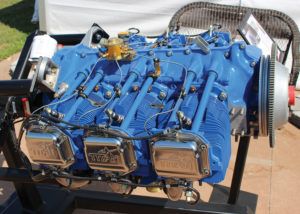
Continental’s move from its legacy building to its new facility—still in Mobile, Alabama—was well on track to be finished by now. But thanks to COVID-19, the manufacturer was forced to take a time-out. Thus, all administrative and engineering staff are in the new building as is all steel-parts manufacturing. But while the CNC-machining centers are on site in the new plant, they were still to be energized and put in operation at our press deadline. All expectations are every operation will be fully functioning in the new plant well before 2021 ends. For now, the increased accuracy and speed of the new machining centers are still a few months in the future.
Continental offers a huge selection of engines when considering the various legacy certified gasoline Continentals along with the newer certified diesels. While Continental tends not to sell noncertified engines under the Continental name, an Experimental, lightweight version of the time-tested O-200 is the one exception.
Continental’s main line of noncertified engines is sold under the Titan banner. These are Experimental derivatives of four-cylinder Lycoming parallel-valve engines in the popular 320, 340, 360 and 370 cubic inch displacements. Power ratings range from 160–195 hp. The 340 and 370 engines are unique in the sense that they’re stroked versions of popular variations. The 340 is a stroked 320, the 370 is a stroked 360. Both provide more displacement in engines with the same physical dimensions as the smaller versions.
These Titan engines come stock with upgrades not available elsewhere. For example, Titan sump/intake manifolds are a magnesium version of the traditional “hot sump” casting, saving a meaningful 7 pounds over the original aluminum casting. Optional sumps are either Titan’s vertical or Superior Air Parts, Inc.’s cold-air intake with a forward-facing throttle body inlet. There is no forward-facing hot sump or rear-facing sump of any kind on Titan engines.
Titan engines also feature steel insert thrust washers for the crankshaft. The original design has thrust loads taken by the parent aluminum of the case, which can gall if run hard before fully wetted during break-in or under very hard loads or extreme time in service. Titan simply machines its cases to accept the steel thrust washers first seen in Continental 470/520 engines to essentially eliminate this issue.
All Titan engines are statically and dynamically balanced, plus use roller lifters—although if you really want flat tappets, they are optional. And Titans allow front or rear propeller governors per the customer’s specifications. Also stock are Continental’s nickel silicon carbide (NiC3) electroplated cylinder barrels for a definite upgrade in durability and corrosion resistance. The manufacturer is happy enough with them to offer a five-year warranty against cylinder barrel rusting on all Titan engines along with the standard two-year or TBO warranty on the rest of the engine assembly. Warranties begin when the engine is put in service, not to exceed one year after purchase. Continental says to expect a 60-day lead time for all engine orders.
For RV builders, Titan offers the base version of several of their engines—these are engines configured for specific RV models—at “very competitive” prices on the Titan website. This gives simple, check-the-box shopping for RV engines, albeit just in the configuration suggested by Van’s. If modifications from those standards are desired, it’s back to the regular Titan lineup.
While the Titan line is mainly built from FAA/Parts Manufacturer Approval (PMA) parts, it also offers an extensive line of optional equipment to choose from. The aforementioned Superior cold-air intake is one example. Another is the EFII System 32 electronic engine management system, added in the fall of 2019. All Titans can be ordered with electronic ignition, and most are purchased that way, though magnetos are still available if you want them.
As for the 540s, Continental remains the only source other than Lycoming for these powerful, lightweight six-cylinder engines. And they carry over the basic technology Continental has put into the four-cylinder Titan lineup.
D-Motor
Like ULPower, another engine hailing from Belgium is the D-Motor, notable for its flathead (yes, flathead) layout. The idea is to have a mechanically very simple engine for reduced weight and cost, coupled with modern electronic engine controls. Thus, the two D-Motor variants: sport dual electronic ignition and electronic fuel injection along with Nikasil-treated cylinders for good corrosion resistance. The result is a compact 92- or 125-hp package that fits nicely in larger ultralight and Light Sport Aircraft. D-Motor engines are distributed in North America by Dave Hertner at Fisher Flying Products in Ontario, Canada.
Franklin Aerospace
Seeing its heyday during WW-II and for quite a while later, the Franklin lives on thanks to the amazing parts inventory produced during its run as a mainstream certified engine. The Franklin still has a following in the certified ranks. But with its type certificate now the property of a Polish company, Franklin Aerospace engines assembled in the United States today, mainly from new old stock, are Experimental-only powerplants.
Thus, the U.S.-based Franklin Aerospace offers its 4A-235 four-cylinder and 6A-350 six-cylinder engines. The four-banger is kept in stock for ready delivery; the six-cylinder is built—or perhaps we should say rebuilt—to order. Both boast Electroair electronic ignition and a Rotec throttle body along with lightweight starters. But modifications to customer orders are possible if you have something specific in mind.
Franklin Aerospace has reduced the compression ratio for mogas compatibility with the current engines. The originals were pretty high-compression engines to begin with, so the current six-cylinder is good “for about 210 hp.” There is no shortage of parts—at least most of them—according to Franklin Aerospace. Private owners have been gathering surprisingly large stashes for years. And Franklin is still buying major collections, often by the semi-truckload. Taking that into consideration, along with machining new examples of the few non-plentiful parts, Franklin remains viable today.
HKS
The time-tested HKS 700E two-cylinder engine remains available in the United States through Quicksilver Aircraft Northeast LLC. Rated at 60 hp for 3 minutes and 58 hp continuously, the opposed two-cylinder is built by one of Japan’s pioneering tuning houses and can be found both on ultralights and very Light Sport Aircraft. Buyers can choose between two gear ratios in the integral spur-gear propeller reduction box and expect a 1000-hour TBO. The basic engine is $11,800, which rises to $13,656 when fully dressed with its dry-sump oil tank, oil cooler and throttle cable.
Jabiru
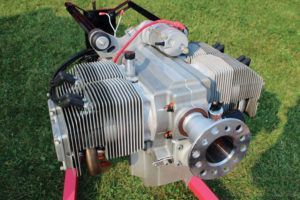
Besides low weight, simplicity and modest cost, development is a keyword in the Jabiru engine story. Now in its fourth generation, the engine is delivering the sort of accessible power its simplicity has always promised. Furthermore, with some of the fourth-gen engines approaching 1000 hours of runtime, even smaller refinements have been made by the Australian manufacturer lately.
But those mods are small. And the fourth-generation Jabiru continues to rely heavily on aluminum construction of the crankcase and cylinders—silicon carbide and nickel coated—for low weight and rapid heat transfer. Jabiru has the parts mainly constructed by specialist machine shops in South East Queensland and South Australia, then assembles them in its own in-house facility before shipping them to Arion Sport Aircraft in Shelbyville, Tennessee. While sales are good, the longish supply chain means it’s smart to plan ahead when ordering through Arion.
Two engines are offered: a four-cylinder 2200 rated at 80 hp and a six-cylinder 3300 rated at 120 hp. Both are popular. The just 132-pound 2200 is in the smaller Zenith and Sonex airframes. The bigger 3300 is typically seen in the Arion, larger Zenith, RANS and Van’s models. A single Bing slide-type carburetor, mechanical fuel pump and inductive ignitions are used, along with fixed-timing ignition distributors. Both the alternator and inductive ignition are integral to the engine. And both should be working as long as the engine is rotating. Finally, Jabiru engines are supplied with ram air ducts from the factory. These fit under the cowling, simplifying engine installation.
Lycoming
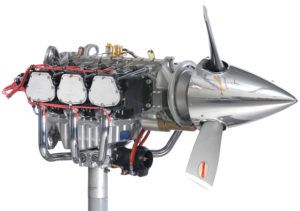
In the traditional big-bore aviation piston world, Lycoming continues to dominate the Experimental/Amateur-Built market. Embracing the Experimental airframers years ago has been a big part of why its engines—or clones thereof—are seen more often than any other in the burgeoning build-it-yourself airplane neighborhood. Also, with Continental now owned by the Chinese, Lycoming is the last large U.S.-owned aircraft engine manufacturer and thus has a leg up in the drone/unmanned aerial vehicle (UAV) market where military contracts lean toward U.S. content. Today Lycoming continues to extend its reach by offering anything from dead-stock, grocery-getting certified mills to extreme performance thumpers for aerobatic and racing fans.
For 2021 Lycoming reports COVID-19 has had essentially no impact on their piston engine sales; the piston business remains very good. And with this demand comes a bit of lead time when ordering an engine. Certified Lycoming-branded engines have an approximate two-month lead time, while the Experimental, custom-built Thunderbolt line is experiencing five to six months between ordering and delivery.
2021 pricing reflects minimal change. The same goes for the engines mechanically. Lycoming’s rebuild shop (not Thunderbolt, but certified rebuilds and remans) now ships engines without alternators, instead directing customers to purchase Plane-Power hardware direct. This move saves everyone money. The SureFly-based electronic ignition is now standard with both Lycoming and Thunderbolt engines. This is not exceptionally new news, but the solid-state, adjustable timing, self-generating electronic ignitions have proven popular. So has the Experimental, big-inch version of the venerable O-360, the IO-390. Now an official option on Van’s RV-14, the IO-390-EXP119 version definitely has the market’s interest, says Lycoming.
For our amateur-built aircraft, the Thunderbolt custom line is where the hot Lycoming action is. All Thunderbolt engines receive a balanced crankshaft and reciprocating assembly as standard, along with ported cylinder heads and a limited number of paint colors (more colors are optional, as is chrome detailing). Airflow Performance’s or AVStar’s constant-flow, mechanical fuel injection and Lycoming’s Electronic Ignition System (EIS) are standard, along with a dynamometer break-in. As expected, there is a price premium for Thunderbolt mills compared to standard Lycomings.
As for the engine displacements, Lycoming lists their familiar 235, 320, 360, 390, 540 and 580 cubic inch designs in their Thunderbolt lineup. That’s every Lycoming save the eight-cylinder 720, which can still be had as a certified engine if you really need that much oomph. Of the engines offered, all use parallel-valve cylinders except the 390 and 580, which employ angle-valve cylinder heads. That makes them more efficient and powerful, but also heavier. The typical optional modification in Thunderbolt engines is compression bumped to 10:1, with the caveat that 100LL fuel is then required (no mogas).
And as we noted last year, to put things in perspective, Lycoming holds one major trump card in the time-tested nature of its powerplants. There are so many Lycs flying that the company estimates the Lycoming brand accrues 1 million fleet hours monthly.
MWfly Aeropower
While in basic terms, the Italian company MWfly groups its engines as either B22 or B25 units, when combinations of displacement, power ratings, drive type, direction of rotation and gearbox ratio are considered, MWfly offers no less than 16 engine combinations ranging from 100 to 155 hp. These modern, designed for aviation engines use a flat cylinder layout to better integrate into existing cowlings and mounts but are water-cooled for tighter internal tolerances and quieter operation. The result is commendable fuel economy on mogas, immunity to shock cooling and potentially better engine life and power. They seem to offer somewhat better power or performance depending on the application due to either higher engine output or propeller gearing.
For 2021, MWfly has matured their product line such that all engines are available in either left- or right-hand rotation. Plus, there are now fuel injectors for each cylinder bank along with improved computer software for increased performance and reduced vibration. Another big change is the addition of a hydraulic propeller (with Sensenich blades) and control for variable-pitch or constant-speed operation.
MWfly is dedicated to full authority digital engine control (FADEC). A plug-and-play philosophy is supported by the CAN bus electrical architecture, so integrating the engines into an electronic flight instrument system (EFIS) or custom tailoring the engine mapping is said to be relatively easy. Engine installation is also aided by the direct mounting of coolers and the accessories.
Gearbox-equipped models employ a mechanical torsional vibration damper and turn higher engine rpm—as much as 4550 rpm—for increased power and slower prop rpm to support longer propellers. There are two gearbox ratios available. Some can accommodate hydraulically controlled constant-speed propellers along with either left- or right-hand rotation.
Pegasus Power
Patience continues to be a virtue (for just a hair longer, we’re promised) around the interesting new O-100 Pegasus DP-1, a two-cylinder derivative of the mega-popular O-200 Continental. Using all-new Pegasus parts where needed and existing Continental O-200 parts when possible, the 58 hp O-100 has already raised plenty of interest in the Light Sport Aircraft (LSA) ranks where it promises torquey, low-rpm, direct-drive performance suitable for long props, plus American Society for Testing and Materials (ASTM) certification.
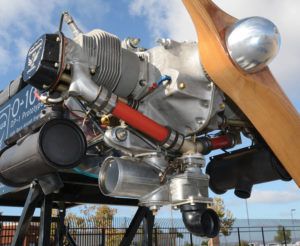
In late 2020 when we checked in with Pete Plumb, who will have single-handedly brought the O-100 to fruition by the end of 2020 or very early 2021, he reported multiple production-ready parts on hand and the first production-specification engine going together. After years of delays developing what turned out to be his own crankcase, forged crankshaft and upgraded connecting rods—among a hundred other details—all the mechanical and production considerations have come together. When we called, Plumb was finished tuning the oil flow and working on production considerations, such as the shipping crate and pallet that doubles as the engine kit’s assembly table.
Plumb was also readying distributors for the new engine. All O-100s will be ordered through a distributor and ship as unassembled parts. It’s expected most buyers will assemble their own engines, especially in the ultralight category. LSA builders seem to prefer assembled engines, so the distributors could choose to assemble a Plumb-supplied kit into a completed engine.
Superior Air Parts
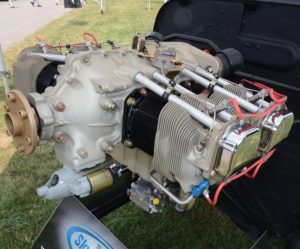
Superior, the very popular maker of replacement engine parts, reports continued robust sales of both certified and Experimental parts through the COVID-19 situation. Sales of their complete Lycoming-based engine kits have slowed, however, only because they’ve been searching for a suitable crankshaft supplier.
To a layperson, it would seem locating a quality forging plant able to supply crankshafts would be easy enough. But once again, the tiny volumes associated with the aircraft market plus the onerous paperwork requirements for an FAA/PMA crankshaft (offering an Experimental-only crankshaft does not make business sense to Superior) means few crankshaft specialists are interested in the job. Still, Superior has been able to produce a few XP-320 and XP-360 engine kits in limited volume in the last year.
Those rebuilding a core engine with a good crankshaft are clearly taking advantage of Superior’s extensive range of engine parts, which remains widely available and a vital alternative in the engine-rebuilding scene. It includes your choice of flat or roller tappets, as well as intake manifolds based on the original Lycoming model of combined oil sump/intake manifold or Superior’s cold-air intake that separates the oil pan and intake runners.
The Superior cold-air intake is the more popular offering, not only due to the efficiency of the cold-air design but also because it is available in traditional updraft or horizontal layouts. The horizontal cold-air layout allows a slimmer cowling and eases packaging a ram-style air inlet, while the updraft version accommodates existing standard-depth cowls. Superior offers a choice of Bendix-style mechanical fuel injection from Precision Airflow or traditional carburetion on all its engines.
ULPower
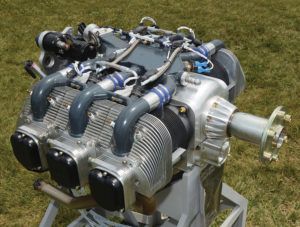
There’s big news from ULPower for 2021. The consortium of Belgium companies comprising ULPower has taken its largest six cylinder, changed it to a dynafocal mount, lowered the compression ratio and turbo-normalized it to produce what should be a potent cross-country and high-altitude engine. Looking competitive in the overall package size, weight and cost arenas, the new engine is rated at 210 hp at 2700 rpm, scales around 270 pounds and seems a natural in the RV series of airframes. It would thus bear examination for all sorts of Lycoming, as well as some of the bigger Rotax applications. At our deadline, ULPower was testing the new engine in an RV-4.
Otherwise, says ULPower’s rather active man in North America, Robert Helms, 2020 was an unexpectedly good year (best ever) for sales. COVID-19 is the likely reason as customers seemed to finish building projects early and have been eager to start on something new. The long-stroke engines in ULPower’s lineup are easily the most popular as they offer the best power-to-weight ratios.
ULPower engines are modern designs offering an interesting combination of traditional horizontally opposed, overhead-valve, air-cooled, direct-drive layout and contemporary electronic engine management. All ULPower engines—both the four- and six-cylinder units—are electronically fuel injected and sparked. A single computer is stock, but dual engine control units (ECUs) are optional. Dual electronic ignition is standard. Just make sure you have a steady and voluminous number of electrons as these engines demand 21 amps running and 50 amps of charging.
We also recommend spending some time with the company’s online technical information as the fuel system is entirely reliant on electrical pumps. There is no mechanical fuel pump. These engines also run more cleanly on unleaded gasoline, with the need for 93 octane (readily available in Europe and much of the east coast of the United States) on the higher power models. That leads to many owners running 100LL. But clearly, ULPower is big on moving to a high-octane unleaded avgas standard.
| Engine Model | Drive Type | Horsepower | Weight | Price |
|---|---|---|---|---|
| AC-Aero USA LLC | ||||
| LEGION 409 | direct | 228 hp | 290 lb w/o fuel system, starter, ign. | $53,050 |
| LEGION 440 | direct | 250 hp | 325 lb w/o fuel system, starter, ign. | $58,850 |
| LEGION 613 | direct | 342 hp | 400 lb w/o fuel system, starter, ign. | $80,250 |
| LEGION 660 | direct | 375 hp | 440 w/o fuel system, starter, ign. | $90,575 |
| GLADIATOR 344 | direct | 200 hp | TBD | $48,950 |
| GLADIATOR 390 | direct | 220 hp | TBD | $50,050 |
| CENTURION 583 | direct | 350 hp | TBD | $75,750 |
| GLADIATOR X-440 | direct | 275 hp | TBD | $65,120 |
| CENTURION RS-660 | direct | Customer specific | Customer specific | $150,000+ |
| GLADIATOR RS-440 | direct | Customer specific | Customer specific | $100,000+ |
| CENTURION X-660 | direct | 415 hp | TBD | $96,360 |
| BRP Rotax | ||||
| 912 UL | geared | 80 hp @ 5800 rpm carbureted | 130 lb w/ exhaust, internal alternator | $16,503 |
| 912 ULS | geared | 100 hp @ 5800 rpm carbureted | 137 lb w/ exhaust, internal alternator | $19,701 |
| 912 iS | geared | 100 hp @ 5800 rpm EFI | 155 lb w/ exhaust, internal alternator | $23,284 |
| 914 UL | geared | 115 hp @ 5800 rpm carbureted, turbo | 155 lb w/ exhaust, internal alternator | $31,539 |
| 915 iS | geared | 135 hp @ 5800 rpm EFI, turbo, intercooled | 185 lb bare, approx 245 installed | $38,667 |
| Continental Motors/ Titan | ||||
| OX-320 | direct | 160 – 167 hp carburetor | 240 lb w/ mags, fuel system, starter | $27,275 |
| IOX-320 | direct | 160 – 167 hp injected | 240 lb w/ mags, fuel system, starter | $28,745 |
| OX-340 | direct | 166 – 180 hp carburetor | 244 lb w/ mags, fuel system, starter | $28,955 |
| IOX-340 | direct | 166 – 180 hp injected | 244 lb w/ mags, fuel system, starter | $30,325 |
| OX-360 | direct | 180 – 185 hp carburetor | 277 lb w/ mags, fuel system, starter | $28,850 |
| IOX-360 | direct | 180 – 185 hp injected | 277 lb w/ mags, fuel system, starter | $30,320 |
| OX-370 | direct | 185 – 187 hp carburetor | 278 lb w/ mags, fuel system, starter | $29,905 |
| IOX-370 | direct | 185 – 187 hp injected | 278 lb w/ mags, fuel system, starter | $31,375 |
| OX-370 | direct | 195 hp carburetor, counterweighted crank | 283 lb w/ mags, fuel system, starter | $30,425 |
| IOX-370 | direct | 195 hp injected, counterweighted crank | 283 lb w/ mags, fuel system, starter | $30,845 |
| OX-540 | direct | 260 hp carburetor, counterweighted crank | 401 lb w/ mags, fuel system, starter | $45,545 |
| IOX-540 | direct | 260 hp injected, counterweighted crank | 401 lb w/ mags, fuel system, starter | $45,736 |
| D-Motor | ||||
| LF26 2690cc 4-cyl | direct | 92 hp @ 3000 rpm | 137 lb w/alternator, starter, dual ECU, exhaust, fluids | $17,640 |
| LF39 3993cc 6-cyl | direct | 125 hp @ 3000 rpm | 184 lb w/alternator, starter, dual ECU, exhaust, fluids | $30,429 |
| Franklin Aerospace | ||||
| 4A-235 4-cyl | direct | 125 hp @ 2800 rpm | 207 lb w/ starter, alternator, Rotec TBI, Electroair EI | $15,900 |
| 6A-350 | direct | 220 hp @ 2800 rpm | 344 lb w/ starter, alternator, fuel injection, ignition | $28,900 |
| 6A-350 | direct | 200 hp @ 2800 rpm | 344 lb w/ starter, alternator, fuel injection, ignition | $24,000 |
| HKS Co. Ltd also: www.quicksilverne.com | ||||
| 700E Twin | geared | 60 hp @ 6200 rpm (3 min), 56 @ 5800 rpm continuous | 121 lb w/ carburetors, fuel pump, dual CDI | $13,656 w/exh., oil tank/cooler |
| Jabiru AU | www.jabiru.net.au | www.flylightning.net | ||
| Generation 4 2200 (4-cyl) | direct | 85 hp @ 3300 rpm | 136 lb w/ exhaust, carb, starter, alternator, ignition | $14,900 |
| Generation 4 3300 (6-cyl) | direct | 120 hp @ 3300 rpm | 184 lb w/ exhaust, carb, starter, alternator, ignition | $18,900 |
| Lycoming | ||||
| YO-235-EXP | direct | 118 hp @ 2800 rpm carburetor parallel valve | 250 lb w/ mags, fuel system, starter | $27,700 (S), $31,700 (T) |
| YO-320-D1A | direct | 160 hp @ 2700 rpm carburetor parallel valve | 255 lb w/ mags, fuel system, starter | $29,200 (S), $33,200 (T) |
| YIO-320-D1A | direct | 160 hp @ 2700 rpm injected parallel valve | 270 lb w/ mags, fuel system, starter | $30,900 (S), $34,900 (T) |
| YO-360-A1A | direct | 180 hp @ 2700 rpm carburetor parallel valve | 285 lb w/ mags, fuel system, starter | $29,200 (S), $33,200 (T) |
| YO-360-A4M | direct | 180 hp @ 2700 rpm carburetor parallel valve | 285 lb w/ mags, fuel system, starter | $28,700 (S), $32,700 (T) |
| YIO-360-M1B | direct | 180 hp @ 2700 rpm injected parallel valve | 290 lb w/ mags, fuel system, starter | $31,200 (S), $35,200 (T) |
| YIO-360-A1B6 | direct | 200 hp @ 2700 rpm injected angle valve | 325 lb w/ mags, fuel system, starter | $37,200 (S), $41,200 (T) |
| YIO-390-A3B6 | direct | 210 hp @ 2700 rpm injected angle valve | 315 lb w/ mags, fuel system, starter | $38,000 (S), $42,000 (T) |
| YIO-390-EXP119 | direct | 215 hp @ 2700 rpm injected angle valve | 315 lb w/ mags, fuel system, starter | $40,200 (S), $44,200 (T) |
| YIO-540-D4A5 | direct | 260 hp @ 2700 rpm injected parallel valve | 400 lb w/ mags, fuel system, starter | $49,200 (S) $53,200 (T) |
| YIO-540-EXP 9:1, 10:1 Cold Air Induction | direct | 285-300 hp @ 2700 rpm injected parallel valve | 400 lbs w/ mags, fuel system, starter | NA (S), Varies per order (T) |
| YIO-580-B1A | direct | 315 hp @ 2700 rpm injected angle valve | 440 lb w/ mags, fuel system, starter | $65,200 (S), $69,200 (T) |
| *S= Standard, T= Thunderbolt, 2021 prices. | ||||
| MW Fly | ||||
| B22D-L-100 | direct | 100 hp @ 3300 rpm | 176 lb w/alt, starter, FADEC ECU, oil & water tanks | $20,290 |
| B22D-R-100 | direct | 100 hp @ 3300 rpm | 176 lb w/alt, starter, FADEC ECU, oil & water tanks | $19,550 |
| B22D-L-135* | direct | 135 hp @ 4550 rpm | 176 lb w/alt, starter, FADEC ECU, oil & water tanks | $22,900 |
| B22D-R-135* | direct | 135 hp @ 4550 rpm | 176 lb w/alt, starter, FADEC ECU, oil & water tanks | $22,900 |
| B25D-L-115 | direct | 115 hp @ 3300 rpm | 176 lb w/alt, starter, FADEC ECU, oil & water tanks | $22,750 |
| B25D-R-110 | direct | 110 hp @ 3300 rpm | 176 lb w/alt, starter, FADEC ECU, oil & water tanks | $22,010 |
| B25D-L-155* | direct | 155 hp @ 4550 rpm | 176 lb w/alt, starter, FADEC ECU, oil & water tanks | $25,500 |
| B25D-R-155* | direct | 155 hp @ 4550 rpm | 176 lb w/alt, starter, FADEC ECU, oil & water tanks | $25,500 |
| B22G-L-122-A | geared (1.730) | 122 hp @ 3950 rpm (2400 prop) | 185 lb w/alt, starter, FADEC ECU, oil & water tanks, EMS display | $22,620 |
| B22G-L-135-B | geared (1.958) | 135 hp @ 4550 rpm (2400 prop) | 185 lb w/alt, starter, FADEC ECU, oil & water tanks, EMS display | $23,850 |
| B25G-L-140-A | geared (1.730) | 140 hp @ 3950 rpm (2400 prop) | 185 lb w/alt, starter, FADEC ECU, oil & water tanks, EMS display | $30,000 |
| B25G-L-155-B | geared (1.958) | 155 hp @ 4550 rpm (2400 prop) | 185 lb w/alt, starter, FADEC ECU, oil & water tanks, EMS display | $32,460 |
| B22G-R-122-A | geared (1.730) | 122 hp @ 3950 rpm (2400 prop) | 185 lb w/alt, starter, FADEC ECU, oil & water tanks, EMS display | $23,240 |
| B22G-R-135-B | geared (1.958) | 135 hp @ 4550 rpm (2400 prop) | 185 lb w/alt, starter, FADEC ECU, oil & water tanks, EMS display | $24,470 |
| B25G-R-140-A | geared (1.730) | 140 hp @ 3950 rpm (2400 prop) | 185 lb w/alt, starter, FADEC ECU, oil & water tanks, EMS display | $30,620 |
| B25G-R 155-B | geared (1.958) | 155 hp @ 4550 rpm (2400 prop) | 185 lb w/alt, starter, FADEC ECU, oil & water tanks, EMS display | $33,070 |
| *Helicopter only. | ||||
| Pegasus Motor Corp. | ||||
| DP-1D 100ci Twin | direct | 58 hp @ 2900 rpm | 110 lb w/ Slick mags, carb, no starter | $4,495 |
| Superior Air Parts | ||||
| XP-O-320-A1AC2 | direct | 160 hp carb, fixed pitch | 285 – 290 lb w/ mags, fuel system, starter | $26,300 |
| XP-IO-320-A1AC2 | direct | 165 hp injected, fixed pitch | 285 – 290 lb w/ mags, fuel system, starter | $27,100 |
| XP-O-360-A1AC2 | direct | 180 hp carb, fixed pitch | 288 – 297 lb w/ mags, fuel system, starter | $26,300 |
| XP-IO-360-A1AC2 | direct | 185 hp injected, fixed pitch | 288 – 297 lb w/ mags, fuel system, starter | $27,100 |
| XP-O-320-B1AC2 | direct | 160 hp carb, constant speed | 285 – 290 lb w/ mags, fuel system, starter | $26,600 |
| XP-IO-320-B1AC2 | direct | 165 hp injected, constant speed | 285 – 290 lb w/ mags, fuel system, starter | $27,400 |
| XP-O-360-B1AC2 | direct | 180 hp injected, constant speed | 288 – 297 lb w/ mags, fuel system, starter | $26,600 |
| XP-IO-360-B1AC2 | direct | 185 hp injected, constant speed | 288 – 297 lb w/ mags, fuel system, starter | $27,400 |
| XP-IO-382-J1AD9 | direct | 200 hp injected, counterweighted crank | 282 lb w/ mags, fuel system, starter | $32,500 |
| XP-IO-400-J1AD9 | direct | 215 hp injected, counterweighted crank | 283 lb w/ mags, fuel system, starter | $34,500 |
| ULPower | ||||
| UL260i 4-cyl | direct | 97 hp @ 3300 rpm / 82 hp @ 2800 rpm | 159 lb w/ accessories, oil, and exhaust | $20,000 |
| UL260is 4-cyl | direct | 107 hp @ 3300 rpm | 159 lb w/ accessories, oil, and exhaust | $21,000 |
| UL350i 4-cyl | direct | 118 hp @ 3300 rpm | 173 lb w/ accessories, oil, and exhaust | $23,000 |
| UL350iS 4-cyl | direct | 130 hp @ 3300 rpm | 173 lb w/ accessories, oil, and exhaust | $24,000 |
| UL390i 6-cyl | direct | 140 hp @ 3200 rpm / 130 hp @ 2800 rpm | 220 lb w/ accessories, oil, and exhaust | $29,000 |
| UL390iS 6-cyl | direct | 160 hp @ 3200 rpm / 140 hp @ 2800 rpm | 220 lb w/ accessories, oil, and exhaust | $30,000 |
| UL520i 6-cyl | direct | 180 hp @ 3200 rpm / 169 hp @ 2800 rpm | 238 lb w/ accessories, oil, and exhaust | $31,500 |
| UL520iS 6-cyl | direct | 200 hp @ 3200 rpm / 182 hp @ 2800 rpm | 238 lb w/ accessories, oil, and exhaust | $32,500 |

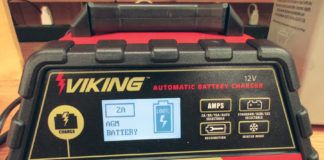
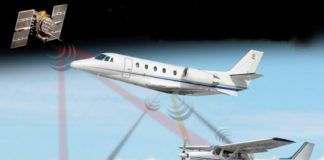
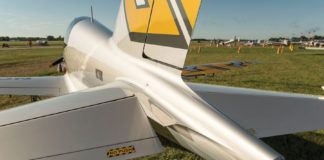
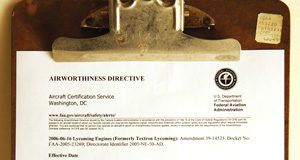
Im starting to get excited about the AC Aero Gladiator x440 300 horsepower to put into my Bearhawk 5 build instead of the IO 580 it was designed for. Looking for the same-ish power but less weight and theoretically, more moose capacity. Or am I deluding myself?